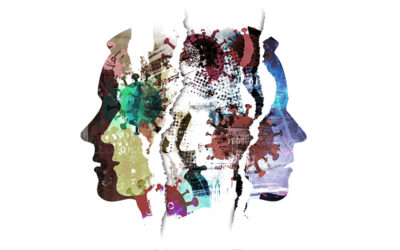Pregnancy can be one of a woman’s most beautiful life experiences; an event many have dreamed of since girlhood. Hormones surge, creating a sense of euphoria (as well as occasional nausea). The awareness slowly arises of a real human being, her child, growing inside of her.
Your changing body
Your uterus expands. It feels as if an alien has taken over your abdomen. The baby kicks and moves, reminding you that he or she will be coming out before too long. As your belly gets bigger, and you move more slowly, the back muscles work harder and harder to rebalance the heaviness growing in front of the body. Frequently, when those muscles tighten, the embedded pain sensitive nerve endings are stimulated.
The check-up
At your six-month Ob/Gyn check-up, the doctor says, “Everything is normal with your pregnancy. The baby is doing well”. The doctor is pleased, and so are you. But you tell her (or him) that you are having terrible low back pain. It has become sharp and constant and sometimes shoots down the back of your leg to your foot. You ask if there anything she can do to help?
“I’m so sorry to hear about your back pain,” she says. “It’s a common problem that many women experience in pregnancy. The good thing is the pain will vanish once the baby arrives in a few months”.
“Is there anything I can do to relieve the pain now?,” you ask.
“Not really. Time will take care of it”.
The chiropractic approach
I have heard this story many times.
Out of desperation, these women find their way to me, a chiropractor.
First I take a thorough medical history. I then ask these women about their lifestyle (i.e., work status, exercise regimen, diet). This is followed by a physical exam. Here, I assess the patients range of motion. I feel for the tension in their musculature and lack of flexibility in their spinal joints.
After formulating a diagnosis and treatment plan, I loosen the tight muscles with deep tissue work and adjust inflexible (subluxated) vertebral joints. Immediate pain relief often occurs. I then prescribe stretches and exercises to strengthen and stabilize their core back muscles.
Historical framework
So why is it so common for an ob/gyn to say that acute low back pain is a “normal” part of pregnancy? And that there is little to do for it? The answer to this question requires an understanding of the history of medicine, and the mind of the medical profession.
Before 1900, the field of medicine was shared by allopathic (regular) doctors, homeopaths, chiropractors, osteopaths, naturopaths (eclectics) and midwives. While they all served the public health, the varied practitioners also engaged in a battle for the hearts, minds and bodies of the public; i.e., for patients.
By the 1920s, allopathic biomedicine had secured its place as the dominant system. It became the mainstream. This was accomplished through the development of effective surgical and pharmaceutical treatments, the building of a sophisticated medical education system–which included the attachment of large urban hospitals to these educational institutions—and skillful political maneuvering.
As allopathic medicine grew, the other modalities receded from public consciousness. Practitioners such as chiropractors or midwives were often referred to as “quacks” or “witch doctors” while those who became medical doctors were seen as the country’s best and brightest.
When medicine fails
Over time, however, many of the medical procedures hailed as miracles turned out to be failures, sometimes even causing harm. Examples include patella debridement (surgical scraping of cartilage under the knee cap to relieve knee pain), an overreliance on antibiotics and the chronic use of anti-inflammatory medications for a variety of musculoskeletal complaints. These failures re-opened the door to alternative therapies that were able to provide effective relief and cure without many of the negative side effects associated with medical procedures.
The body/mind field: A philosophical digression
Much happens in the field we identify as our body/mind. It is within this field that we get sick, become healthy, feel pain, warmth, love and myriad other sensations. We are aware of this body/mind as a whole. Yet at the same time, we perceive body and mind as somehow separate. If you sprain your ankle, you say, “my ankle hurts.” If you are diagnosed with cancer, you say, “I have cancer”. There is a subtle distancing between your self (I) and the body (it) that has the condition. Yet when a woman becomes pregnant, she says, “I AM pregnant”; not, “I have a pregnancy.” Pregnancy is not a condition that attaches to one’s body but is instead a part of one’s being. Many couples take it even further, including both partners in this identity: “We are pregnant.”
Diagnosis: pregnancy
In our current medical arena, pregnancy has become a a pathologized condition; reduced to a diagnosis that must be managed by medical professionals. The MD, as primary provider, is generally in charge from discovery to delivery.
But pregnancy is NOT a diagnosis. Treatment is advised only if and when something goes wrong in the course of that pregnancy. Until then, the pregnant woman can be fully supported, her body/mind provided with loving care.
Medical identity and patient emancipation
Standard medical education teaches students about allopathic medicine. Medical residencies and internships are conducted almost completely within the allopathic framework. They are taught to provide treatment primarily with pharmaceuticals, diagnostic tests, and procedures (e.g., surgery). Their education and experience has not fully addressed the mind, body and spirit of each person and how to care for each patient as a whole person. They are taught almost nothing about the alternative primary care modalities that are well utilized by the public; modalities that are fully licensed and often reimbursable within the American health insurance system. Over the four years of medical school and four more of residency, the doctor’s identity and worldview have been forged. So it is not surprising that when MDs make referrals, it is almost always to another MD: a neurologist, cardiologist, orthopedist, etc.
When a pregnant woman presents to the ob/gyn with severe low back pain, the doctor is often at a loss. The use of drugs and/or surgery is inappropriate. However, because their world has been professionally and psychologically circumscribed, it is difficult for them to imagine referring their patient to a chiropractor or a massage therapist. And if there is nothing that the MD can do, they may tell themselves, there is nothing that can be done.
It is at this point that the pregnant women can sometimes break free of their reliance on allopathic treatment as the only legitimate pathway. This is when they present themselves in my office.
Letting go
To be clear, let me state that the MD is essential. If a woman gets an infection, or develops diabetes, if the mother goes into labor prematurely or if their baby is in serious distress, you want an MD on the front line of care.
They are often indispensable. But there is also so much they cannot do.
For back pain, nausea and night sweats, it is often the chiropractor, acupuncturist and naturopath who can offer relief of pain and suffering. It is these complementary providers who can help to maintain the pregnant woman’s health by promoting structural and biochemical balance. This, in turn, prevents the emergence of symptoms that do require treatment.
Referring a pregnant woman to a chiropractor for back pain does not constitute a “failure” of allopathic medicine. However it does force the MD to acknowledge that there are important modalities that exist outside of traditional allopathic medicine—and therefore outside of their control. In the interest of our patients health, providers in all the healing arts should embrace what we can do, and recognize what can best be done elsewhere.
Integration
Pregnancy can be a beautiful experience for a woman and her family. It should be treated as such. Proper nutrition, chiropractic adjustments, physical therapy, acupuncture and massage can all help to maintain systemic balance. A caring midwife and/or doula can monitor the biological changes and be present to assist the birth in a tranquil environment. And the medical doctor can be on hand in cases of emergency.
By integrating these modalities, a woman will more likely be able to experience pregnancy and birth as the wonderful human process that it is, and not as a syndrome or disorder to be managed. Because a woman does not “have” a pregnancy. She is pregnant in the whole of her body/mind.
Dr. Ricky Fishman has been a San Francisco based chiropractor since 1986. In addition to the treatment of back pain and other musculoskeletal injuries, he works as a consultant in the field of health and wellness with companies dedicated to re-visioning health care for the 21st century.
ricky@rickyfishman.com www.rickyfishman.com












